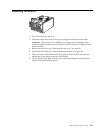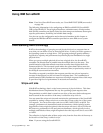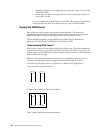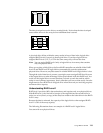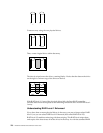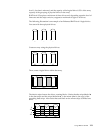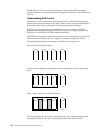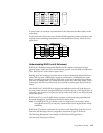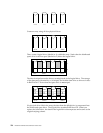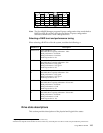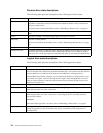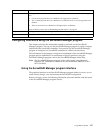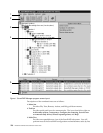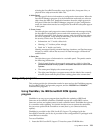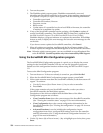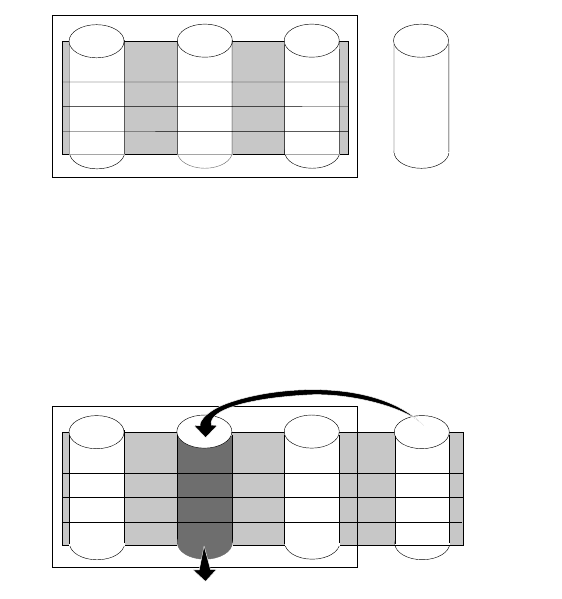
Using IBM ServeRAID 123
A parity block (
★
) contains a representation of the data from the other blocks in the
same stripe.
If a physical drive fails in the array, the ServeRAID controller switches read and write
requests to the remaining functional drive in the RAID level-5 array, which is a hot-
spare drive.
Understanding RAID Level-5 Enhanced
RAID level-5 Enhanced (also called RAID level-5E) requires a minimum of four
physical drives. RAID level-5E is also firmware-specific. You can think of RAID level-
5E as "RAID level-5 with a built-in spare drive."
Reading from and writing to four disk drives is more efficient than three disk drives
and an idle hot spare and therefore improves performance. Additionally, the spare
drive is actually part of the RAID level-5E array, as shown in the following example.
With such a configuration, you cannot share the spare drive with other arrays. If you
want a spare drive for any other array, you must have another spare drive for those
arrays.
Like RAID level-5, this RAID level stripes data and parity across all of the drives in
the array. When an array is assigned RAID level-5E, the capacity of the logical drive is
reduced by the capacity of two physical drives in the array (that is, one for parity and
one for the spare).
RAID level-5E is a very desirable choice, because it offers both data protection and
increased throughput, in addition to the built-in spare drive.
Note: For RAID level-5E, you can have only one logical drive in an array. When
using RAID level-5E, you can have a maximum of seven logical drives on the
controller.
RAID level-5E requires a minimum of four drives and, depending upon the level of
firmware and the stripe-unit size, supports a maximum of eight or 16 drives.
The following illustration is an example of a RAID level-5E logical drive.
You start with four physical drives.
x
*
*
*
3 4
1 2
*
5 6
7 8
x
x
*
*
*
*
2 1
3 4
5 6
8 7



